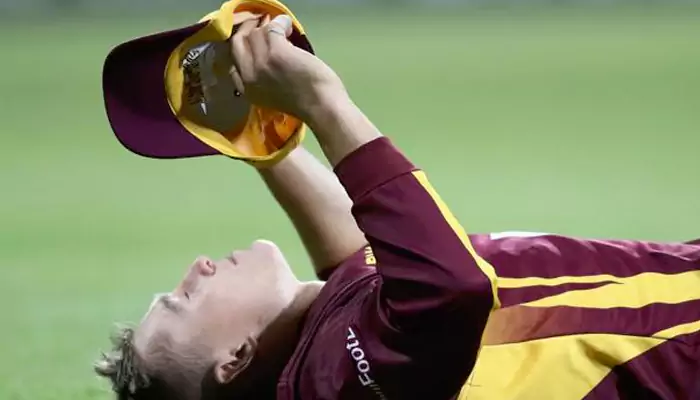From The Shadow Rule To Fake Fielding, Check Out The Six Most Outlandish Cricket Rules and Regulations
Did you know that the game of cricket currently has 42 rules that every player needs to comply with? Sounds crazy, right?
- Satavisha
- 21 December, 2023
- 2 mins ago

From The Shadow Rule To Fake Fielding, Check Out The Six Most Outlandish Cricket Rules and Regulations
Did you know that the game of cricket currently has 42 rules that every player needs to comply with? Sounds crazy, right?
You may be a diehard cricket fan, but you still might be unaware of a few rules because there are rare incidents and past scenarios that resulted in the origin of some outrageous and outlandish game rules. And undeniably, some rules make no sense. So, let us look at some of the weird rules of cricket.
Rule 1: Bails Don’t Fall
The bails on the stumps are not placed for nothing—they serve a purpose. This rule suggests that after the ball has been delivered, if it comes in contact with the stumps, the batsman will still not be dismissed if the bails are in place. Recently, such an incident happened during the 4th Ashes Test, when Ben Stokes faced a delivery from Cameron Green, which hit the off-stump, but the bails were intact.
Rule 2: Maximum Two Fielders Behind Square Leg
You may not know this, but only one or two fielders can position themselves between the long stop and square leg positions—in the minor area. This rule saves the batsman from bodyline deliveries (now considered illegal) to eliminate the bowler’s attempt to target the batsman’s upper body and deliver a mistimed shot when the batsman tries to save himself from being hit.
Rule 3: The Shadow Rule
According to the shadow rule, if any fielder casts a shadow on the pitch, they cannot move until the batsman has played the shot. A batsman needs to be very focused when facing a delivery. Therefore, this seemingly bizarre rule eliminates the unfair distraction that the batsmen may have to face while they are focusing on the ball.
Rule 4: Fake Fielding
Fake fielding originated in 2017, and it falls under the Law 41.5.1 of the MCC Laws of Cricket. This law suggests that if a fielder fails to stop the ball, he is not allowed to mock a throw towards any end. If a fielder attempts a mock throw, his team will have to face a penalty, and the batting team will receive 5 runs.
After this law was introduced in 2017, the Australian player Marnus Labuschagne became the first player to face a penalty under the rule.

Rule 5: For Deliberate Padding, No Runs Shall Be Awarded.
You might have noticed that sometimes batsmen try to stop the ball deliberately with their pads, commonly when a leg-spinner delivers a leg break. But this rule establishes that—after deliberately padding the ball, the batter cannot score runs. In such cases, if the ball touches the boundary, the runs will still not be counted. However, this rule does not apply to leg byes. Leg bye runs will be allowed by the umpires if the batsman genuinely attempted a shot but missed and the ball hit his pad or if he is avoiding the ball to prevent it from hitting his body.
Rule 6: Batting Team Receives Penalty Runs for Deliberately Kicking the Ball
Cricket has some very odd rules, and this is one of them. So, it suggests that if a fielder deliberately kicks the ball across the boundary then the batting team will be awarded 5 penalty runs. Well, this rule makes no sense because if the fielder deliberately kicks the ball over the boundary, the batting team will score 4 runs.
Over the years, many players have fallen victim to these outlandish rules, and even in the future, we will likely witness many such captivating instances of violation of these rules and the subsequent penalties offered by the umpire.









